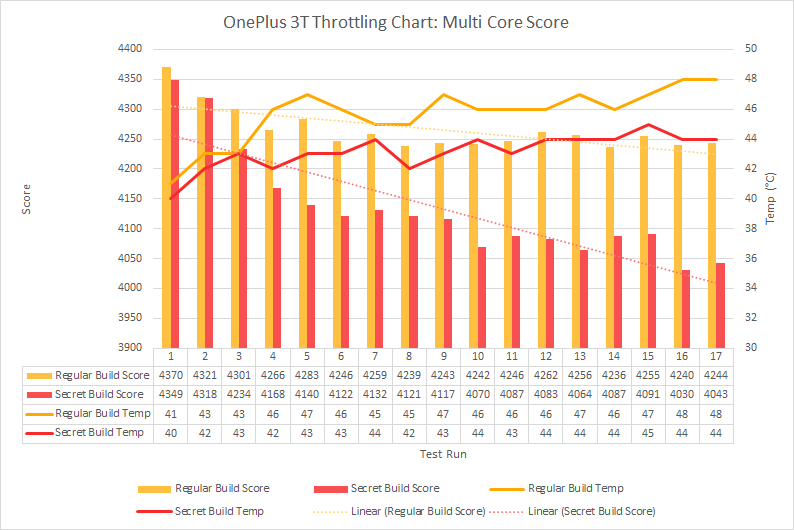
Your OnePlus and Meizu handsets might not be as powerful as benchmarks tests say.
XDA-Developers reports the two phone-makers have apparently tweaked some of their top-selling devices, including the OnePlus 3 and 3T as well as the Meizu Pro 6, to artificially boost CPU performance when running benchmark tests.
Unlike standard testing optimizations, the phones have been modified to automatically switch their processors into overdrive mode anytime widely-used benchmarks are detected.
The publication notes the rigged processing performance can be observed when monitoring the differences in CPU activity between running regular apps and benchmark apps. But both OnePlus and Meizu have different approaches of accomplishing this.
While OnePlus has programmed both its big and small processor cores to idle at 0.31 GHz for non-benchmark tools, the processing power of both cores increases to, respectively, 1.29 GHz for the big one and 0.98 GHz for the small one as soon as benchmarking apps are detected.
In addition to this, OnePlus appears to have hard-coded a list of benchmark tests (Geekbench, AnTuTu, Quadrant, Androbench, Vellamo and GFXBench) into its firmware. As XDA-Developers points out, this could explain why running a “disguised” version of Geekbench 4 under a different name failed to trigger the high-performance mode on the OnePlus 3T.
In the case of Meizu, XDA-Developers discovered the manufacturer has modified its big cores to activate whenever benchmarks are detected. While the big cores are expected to switch on anytime the device requires additional processing might, the Pro 6 appears to have been set to keep the big cores idle until benchmarks have started running. In other words, while the Pro 6 might not rely on the big cores when running regular apps (even when extra processing power might be required), they will certainly be activated during benchmarks.
OnePlus has confirmed the misleading configuration to XDA-Developers, promising to stop cheating benchmarks by limiting artificial CPU boosting exclusively to games (for purposes of ensuring smooth performance). This is what the phone-maker had to say:
In order to give users a better user experience in resource intensive apps and games, especially graphically intensive ones, we implemented certain mechanisms in the community and Nougat builds to trigger the processor to run more aggressively. The trigger process for benchmarking apps will not be present in upcoming OxygenOS builds on the OnePlus 3 and OnePlus 3T.
The publication further notes that, while OnePlus is certainly not the only one resorting to such practices, so far it’s the only phone-maker to acknowledge any wrongdoing – not that this alleviates its actions in any way. Meizu is yet to follow their example.
In any case, it is worth pointing out that XDA’s findings suggests the improvements in performance in the case of OnePlus were rather insignificant. It also stressed that the artificial throttling had no impact on OnePlus 3 and 3T reviews as the modification wasn’t yet implemented at that time.

More alarmingly, however, XDA-Developers revealed that in addition to OnePlus and Meizu, the news outlet discovered similar irregularities when running benchmarks on phones manufactured by other brands.
While the publication refrained from naming any potential offenders until more research has been conducted, it shared some of the companies that haven’t been caught cheating. As of now the list includes Google, HTC, Xiaomi, Huawei, Honor and Sony.
Back in 2013, Samsung was caught pulling off a similar trick to simulate performance gains on the Galaxy Note 3. While the South Korean giant faced a heated backlash, AnandTech eventually published a report showing that a number of other major manufacturers, including LG, ASUS and HTC, had similarly engaged in the same practice.
Get the TNW newsletter
Get the most important tech news in your inbox each week.



